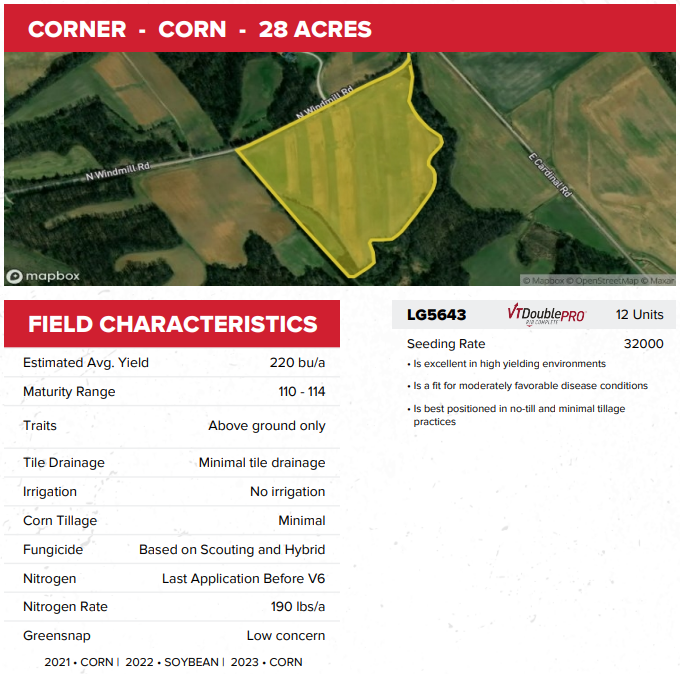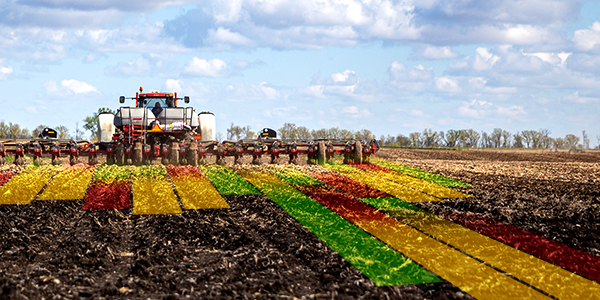AGRONOMICSUPPORT
YOU CAN TAKETO THE FIELD
Variable Rate Technology: What is it and What Are the Benefits?
Not every farm is created equal…
Nor every field on a farm…
Nor every acre in a field…
The thing is, soil and environmental conditions can vary a lot across individual fields, so applying uniform amounts of inputs across an entire field may not give you the best ROI.
And that’s where variable rate technology (VRT) comes into play
.png?sfvrsn=eb87b59f_1)
What’s VRT? Variable rate technology (via variable rate application) is an advanced farming technique that enables farmers to apply different rates of fertilizer, seed, and other inputs at different rates in locations across a field.
VRT is at the heart of precision agriculture, and because of technological advancements, it’s becoming more accessible as an effective management tool for farms of all shapes and sizes.
Plus, utilizing variable rate application techniques comes with a slew of benefits:
- Improve yields by applying the right amount of fertilizer at the right place and time to boost crop performance.
- Save time by reducing the need for multiple input applications.
- Reduce environmental impact by minimizing wasted inputs.
- Improve soil health by implementing custom soil management.
- Make more informed decisions by providing field-level data so you can appropriately tailor your inputs and management techniques.
VRT: Your Options
With variable rate applications, there are, well, a lot of variables. Let’s explore a few standard options:
Variable Rate Irrigation: Using moisture sensors to measure soil water content, variable rate irrigation allows a farmer to adjust the amount of water applied to different areas of the field according to the needs of that zone’s plants. Producers conserve water and energy and mitigate soil erosion problems by revolutionizing how they irrigate their crops.
Variable Rate Seeding: Using GPS and GIS to precisely control the amount of seed planted per acre, VR seeding is an effective way to make the most out of your unique soils. As a general rule, corn planted in poorer soils should have fewer plants per acre, and the population should be increased on more fertile acres. This method limits inputs on soils that perform marginally (which is a good thing). Alternatively, soybeans should be planted at higher populations on marginal acres and at lower population densities on the best acres—allowing those plants to really spread out and produce a lot of pods.
Variable Rate Fertilizers: We’ve all seen it—that spot in your field that annually produces GREAT yields and that spot that is always lacking. Utilizing soil sample data, farmers can adjust the amount of fertilizer they apply in different areas of the field, which helps conserve inputs and maximize ROI. This also helps avoid over-fertilizing, which can lead to water pollution.
Variable Rate Weed Control: There’s no need to spend money on more herbicide for areas that don’t need it. Light spraying in some locations, heavier in others, and no spraying in spots where the crop canopy is already doing its job—variable rate herbicide applications can minimize drift, save dollars, and help the environment.
LG Seeds VRT Tools:
Now it’s time to put all that VRT info into action.
And with LG Seeds, you have all the necessary tools to make that happen.

When you’re ready, head to your Mix Matters account to get started. Our Mix Matters tool allows you to quickly create an effective variable rate plan when you first create your farm’s Seed Plan. It thoughtfully recommends product selection, field placement, and fixed planting rate by first considering the interaction of the Genetic by Environment by Management factors at the field level through a set of characteristics:
- Your goals, challenges, and practices
- The soil’s surface texture, drainage classification, and long-term weather forecast
- Seed products’ genetic characteristics as rated by your local LG Seeds agronomist
Once a seed product and desired fixed planting rate are added to a Planting Field Record (such as transferring a Seed Plan from the Mix Matters Tool), the Productivity Index Map is assigned to the Planting Field Record, and a Seeding VRx is available within seconds.

After you’ve created your Seeding VRx, you can head further into Advantage Acre to find the Functional Soil Maps that work in conjunction with long-range weather tracking and forecasting to provide a nitrogen modeling tool. This can help you track and predict nitrogen availability in a corn crop for any field boundary added to Advantage Acre. From here, you can select your seed product and desired yield goal and add it to a Planting Field Record. Add nitrogen fertilizer application trip timing and amounts to get your nitrogen availability maps. From here, you can create a nitrogen VRx with one click.
At the end of the day, a proper Seed Plan starts with Product Selection, Product Field Placement, and Product Planting Rate. Work with your agronomist and our Mix Matters Tool to create a better Seed Plan for all your fields. A better Seed Plan means better VRx’s – and a better ROI.
Still Have Questions? Let Us Help.
As you consider improving your cropping and cultural practices, LG Seeds is by your side—no nonsense, no excuses. Reach out to your LG Seeds agronomist today, and let’s discuss if implementing variable rate applications is the right move for you and your operation.
Now that’s support you can take to the field.






Agronomy Team